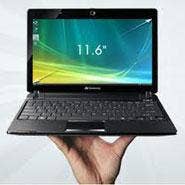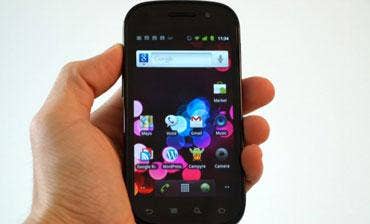Smaller, Lighter, Faster: Mobile Devices Continue To Shrink While Improving Performance
Apple's MacBook Air Sony's Z Series

For evidence of PC makers' passion for portable, just six short months after publishing its Ultrabook specifications, Intel proudly announced that at least five machines had been designed, developed and were shipping under the spec, and that many more vendors had signed on.
By the time you read this, Dell will be days away from announcing an Ultrabook device of its own, adding to its existing XPS line of small and light high-end ultraportables. The Dell Ultrabook device will reportedly be unveiled at CES 2012.
Ultrabook devices available today include the half-inch-thin Acer Aspire S3; two models from Asus: the 11-inch Zenbook UX21 and the 13-inch Zenbook UX31; a solid aluminum IdeaPad U300S from Lenovo; and Toshiba's 2.5-pound Portege Z830.
Having reviewed the Acer Aspire S, the CRN Test Center reports strong application benchmarks, instant-on responsiveness, and extremely long battery life only serve to enhance this unit's its paper-thin physique and handsome brushed metal exterior. The S3 fulfills all but one of Ultrabook's major design goals; it's fast and offers powerful graphics, efficient energy usage and instant-on responsiveness. But users looking for the always-on capability will have to wait for Windows8 and Ivy bridge, Intel's third-generation Core processors.
With the S3's slender frame and brushed aluminum exterior, comparisons to Apple's MacBook Air are inevitable. The wafer-thin beauty is just as sleek as the Air at its thickest (0.68 inches), and both units taper near the edges. Inside, the similarities continue. The S3's Chicklet-sized flat keys and trackpad with integrated buttons have the look and feel of a MacBook. But the S3's trackpad is about a half-inch smaller in both directions than Apple's, and is limited to two-finger gestures, half as many as Apple's.
As for responsiveness, Acer's so-called Green Instant On and Instant Connect have the Ultrabook awake and alive less than three seconds after opening the lid, another Mac OS X-like trait. The tested unit was equipped with an Intel Core i5 dual-core 1.6 GHz processor (as is Apple's base unit) running the 64-bit version of Windows 7 Home Premium on 4 GB of memory.
Geekbench 2.0 turned in a respectable top score of 5,657, but only after McAfee and Microsoft nagware were removed or disabled and Windows was set for fastest performance. Most Mac OS X scores of a similarly equipped MacBook Air the CRN Test Center came across hovered in the high 4000s and low 5000s.
Interestingly, Acer makes a non-Ultrabook machine similar to its Aspire S3, the TravelMate TimelineX 8481T, that performed as well or better than its Ultrabook device. It's slim, fast, lightweight, great looking, and ran at full brightness and with all power saving features disabled for seven and a half hours.
The inch-thick, four-pound TravelMate has a larger-than-usual screen 14-inches screen thanks to an ultra-slender bezel. It also arranges its ports on the sides only, avoiding the rear where their connectors are less convenient to plug in and can become stressed. its UISB 3.0 port provides power at all times. Like the Ultrabook, there's no optical drive and fewer bells and whistles than fuller-featured units. But the $999-list TravelMate lives up to its name where it counts, and Acer didn't scrimp on security; there's pre-boot authentication and finger print scanner.
The tested TravelMate was equipped with an Intel Core i5 (2557M) 1.7 GHz dual core (Sandy Bridge) processor running 64-bit Windows 7 Professional on 4 GB of DDR3 memory. It turned in a Geekbench 2.1 score of 6529. All testing was done with the TravelMate set to its maximum screen resolution of 1366 x 768, driven by Intel's HD 3000 graphics controller with 1760 MB memory.
The point is that despite already offering a light, fast and handsome unit in the TravelMate, Acer opted to develop a lighter, thinner and more stylish device, its Ultrabook, thus following and validating the trend.
NEXT: Two Out of Three Ain't Bad -- It's Terrible

For those still not convinced that pretty, petite and performance are the orders of the day, one has only to take a lesson from recent history. Recall the netbook, a series of small, light and so very cute "mini-notebook" computers, many of which were built around ARM-based processors.
While petite and pretty, netbooks were just not fast enough to justify their existence. Many people also balked at their smaller-than-usual keyboards, and with the exception of the specialty niche, the netbook is a dead issue.
Smarter Smartphones
Meanwhile, smartphones by some measures have been evolving even faster than laptops, adding cores and gigahertz faster than Ben and Jerry's adds new ice cream flavors.
Samsung's Nexus S4G, with its dual-core 1GHz Hummingbird processor, is far more powerful than PCs considered cutting edge of just a few years ago.

When the Test Center earlier this year looked at the Nexus S, which was jointly developed by Google and Samsung, testers were impressed by its fast performance, sleek, curved-glass design and long battery life. it was running the then-new Android 2.3 Gingerbread, which presented huge performance increases over prior versions, particularly when launching applications. This was due largely to advances in garbage collection and event handling.
And in the mid-October open source drop of source code for Android v4.01 for smartphones and tablets, the so-called Ice Cream Sandwich release gave users a refined and more intuitive user interface, quicker response to incoming calls, an improved keyboard and spell-checker, more focus control and live effects in the camera app, and major improvements in the email client.
And for app builders, Ice Cream Sandwich includes a ton of new stuff just for developers, including a consistent UI framework for tablets, smartphones and other devices. The new framework still delivers interface elements and APIs from version 3.x, including content loaders, notifications and resizable widgets for the home screen, and brings new APIs for social networks, calendaring, and visual voicemail.
Also last month, it was reported on Wired.com that HTC is working on what it claims to be the world's fist quad-core phone. It will reportedly be based on the forthcoming Nvidia Tegra 3 processor, which sports four cores running at 1.5 GHz. A quad-core processor in a phone. Wow. What will they think of next.